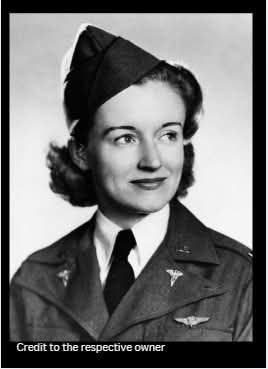During World War II, the U.S. Army Air Corps broke new ground in military medical care by developing air evacuations for wounded soldiers. A key figure in this effort was 2nd Lt. Elsie S. Ott, a flight nurse on the first intercontinental air evacuation flight that showcased the promise of air rescue. Born in 1913 in Smithtown, New York, Ott attended Lenox Hill Hospital School of Nursing in New York City after finishing high school.
After working at several local hospitals, Ott joined the Army Nurse Corps in September 1941. She was commissioned as a second lieutenant soon after and served in Louisiana and Virginia before being sent to Karachi, India. It was there that she took part in the pioneering air evacuation flight. The patients were flown from Karachi to Walter Reed Hospital in Washington, D.C.
Ott was assigned to the flight with only 24 hours’ notice. Before this, she had no flying experience and had never flown before. She gathered blankets, sheets, and pillows for the trip, but the only medical supplies she had was a basic first aid kit. No medical professionals screened the patients beforehand, and Ott, along with a sergeant who had a medical background, were the only ones on board caring for the wounded.
The plane left Karachi on January 17, 1943, carrying five injured personnel. Among them were two paralyzed from the waist down, one with tuberculosis, another with glaucoma, and the fifth suffering from manic-depressive psychosis. After several stops for refueling, the plane reached its destination nearly a week later—a journey that usually took three months by ship.
Ott knew her report on the flight would be vital for future planning, so she sat down immediately to take notes. She suggested the need for oxygen, more wound dressing supplies, extra coffee, and blankets. She also remarked that wearing a skirt was not practical for this kind of duty.
Two months later, Ott received the first U.S. Air Medal ever awarded to a woman in the U.S. Army for her role in the evacuation. She was later promoted to captain and discharged in 1946. Almost 20 years later, in 1965, Ott was invited to christen a new kind of air ambulance: the C-9 Nightingale.
